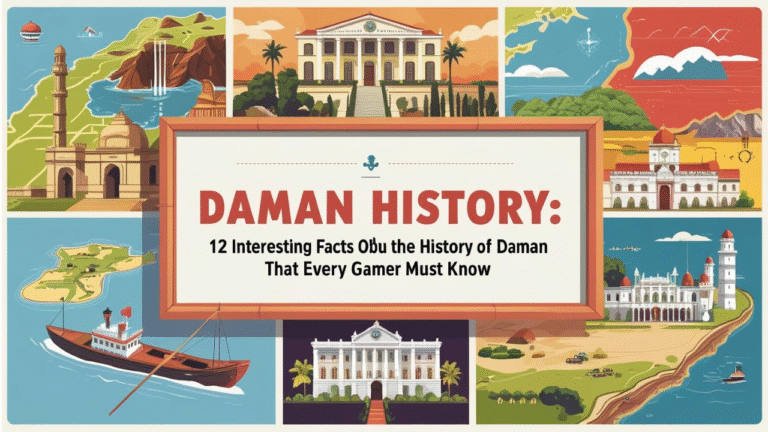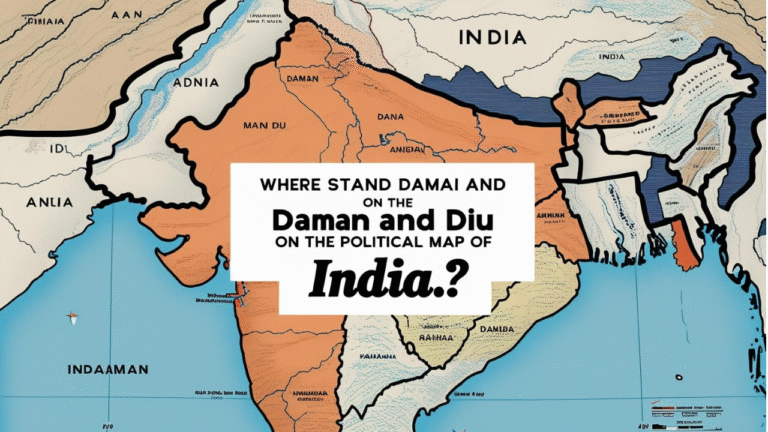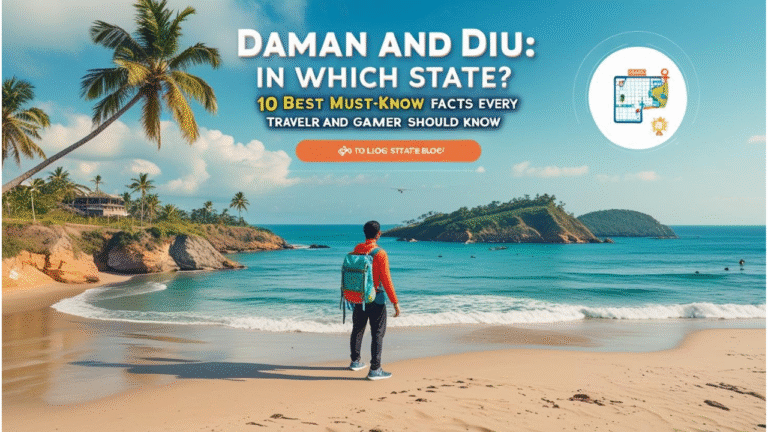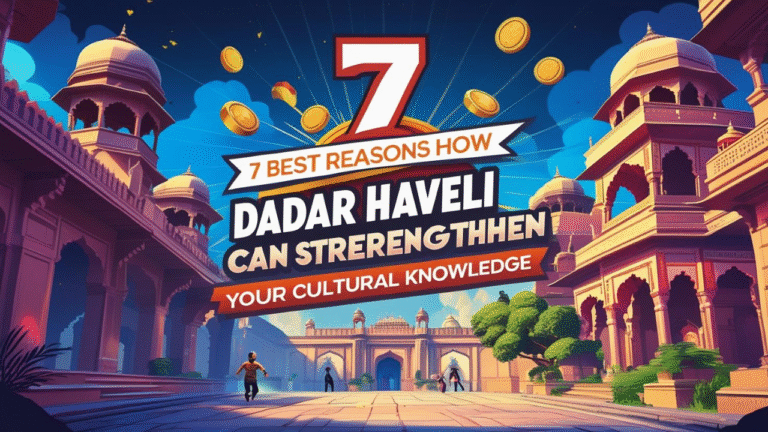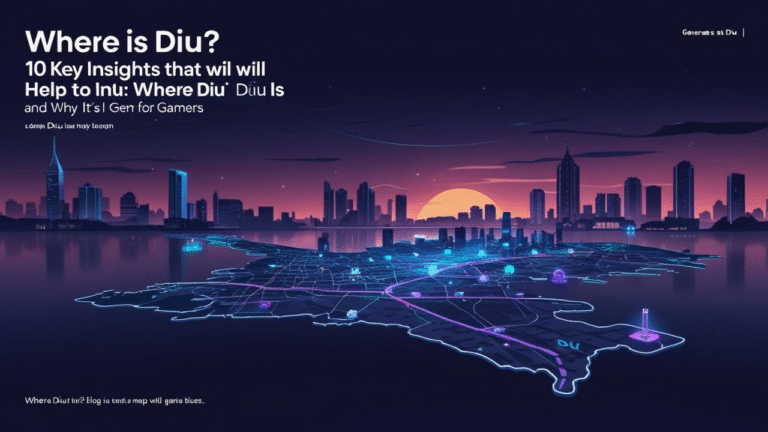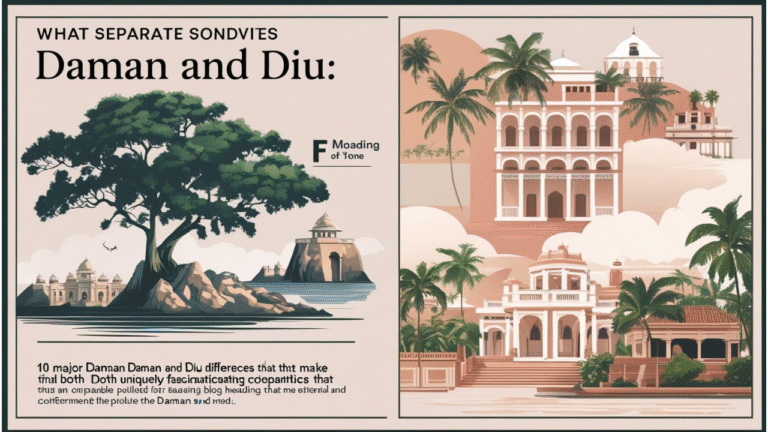Introduction
India’s geopolitical landscape is a rich tapestry of states and union territories, each carved through centuries of history, culture, and political one-upmanship. One such unique and often forgotten corner is Daman and Diu — a coastal tag team that packs far more history than its demographic punch. You may ask: why Daman and Diu is Union Territory and not included within a state like its neighbors? The reason is not merely colonial legacies but also post-independence strategy, cultural preservation, and administrative pragmatism.
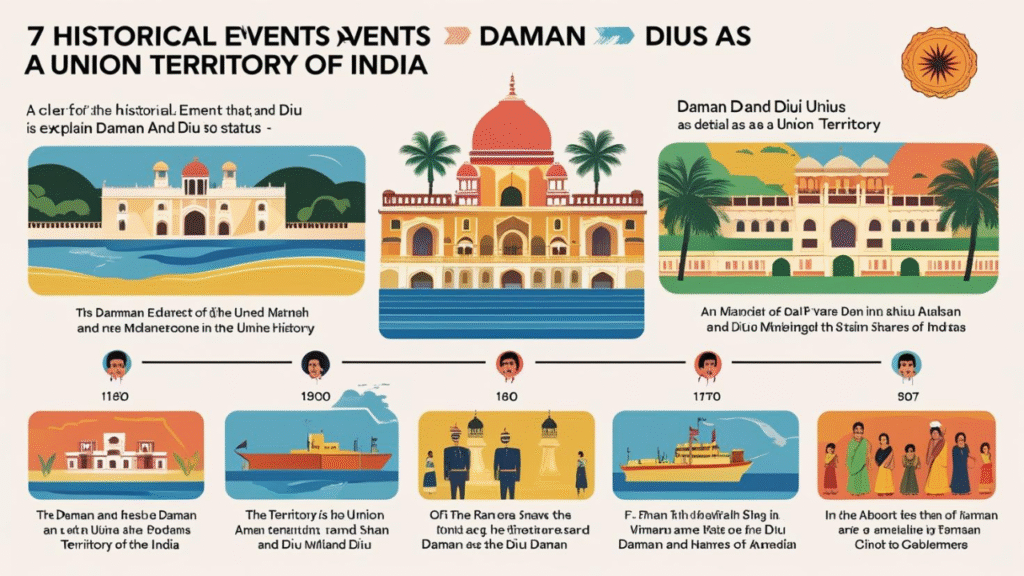
In this post, we’ll dive deep into the 7 major reasons why Daman and Diu is designated as a Union Territory. We’ll analyze the factors behind this unique status, uncover its historical roots, and explore its implications in present-day India — especially for regional governance and economic integration.
Understanding the Basics: What Is a Union Territory?
Before we get granular, it is important to know what a Union Territory (UT) is in the Indian administrative context. As opposed to states that have their own governments, UTs are governed directly by the Central Government of India, typically through a Lieutenant Governor or Administrator. This difference becomes important in analyzing why some areas like Daman and Diu are governed differently than full-fledged states.
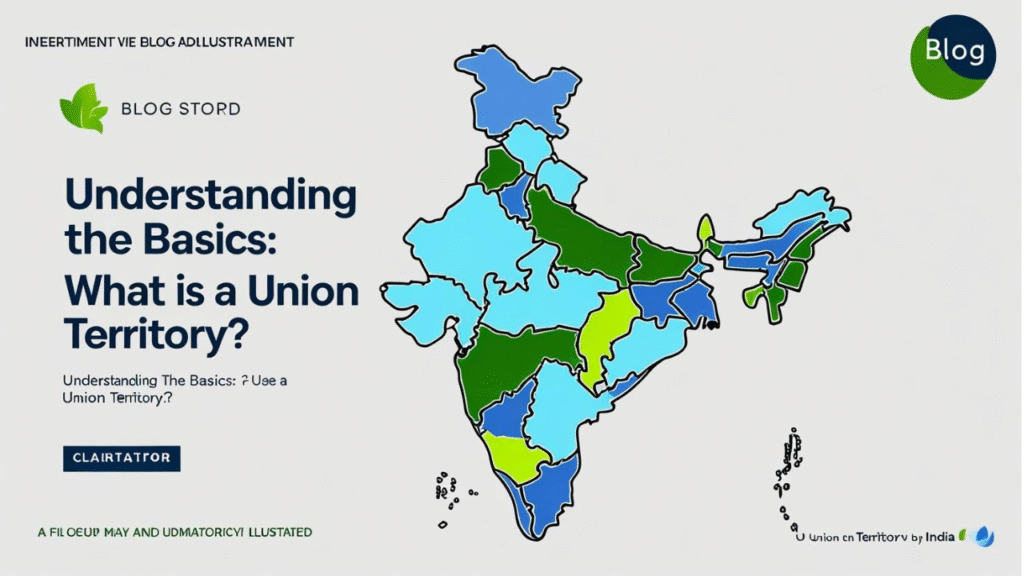
Now let’s discuss the seven most important reasons why Daman and Diu holds this ranking.
Colonial Heritage and Portuguese Domination
Daman and Diu were under Portuguese India for more than 450 years, well past the time when the British established their hold on the majority of the subcontinent. While India became independent in 1947, these territories stayed under the control of Portugal until 1961, when they were annexed by military means in Operation Vijay.
In contrast to Goa, which had a larger population and more infrastructure, daman and diu capital were geographically isolated enclaves. On annexation, they were put administratively together with Goa. But their distinct colonial history made them culturally different from Goa as well as the neighboring Indian states.
Separation from Goa in 1987
Perhaps the most crucial in recent times was the bifurcation of Goa, Daman, and Diu in 1987. Goa became a full-fledged state because of its size, population, and economic viability. Daman and Diu were too small and thinly populated to justify independence as states.
Therefore, they were kept as a Union Territory in order to have streamlined administration. This division was strategic in nature: give autonomy to Goa while retaining smaller enclaves like daman and diu distance under central rule.
Geographical Isolation from Each Other and from Goa
Though frequently administratively grouped together, Daman and Diu are geographically about 700 kilometers apart from each other. Daman is on the Gujarat coast whereas Diu is situated farther south on the Kathiawar Peninsula. This spatial distance made centralized state-level administration difficult.
A Union Territory form enabled flexibility as well as immediate administrative control over both territories without the logistical difficulties of incorporating them into one state or with Goa.
Small Area and Population
As of the last census, Daman and Diu collectively cover more than 100 square kilometers and contain less than 250,000 inhabitants. For perspective, even India’s smallest such places as Sikkim or Tripura have much bigger populations and territorial reach.
This sparse population and territory rendered statehood both unwanted and economically unfeasible. The model of Union Territory makes it possible for the central government to control infrastructure, law and order, and public welfare directly.
Strategic and Economic Importance
Small as the entities are, the coastal positions of Daman and Diu hold strategic and economic significance. They are used as ports, tourists spots, and sites of maritime surveillance. Daman, in particular, has become a low-tax manufacturing hub with industrial clusters, aided by central control.
The central government has utilized Union Territories frequently to create certain economic centers — in the case of Chandigarh or Puducherry. Daman and Diu are modeled along the same lines, allowing for business-friendly policies outside of state-level red tape.
Cultural and Linguistic Diversity
Daman and Diu’s cultural environment is a blend of Portuguese legacy, Gujarati roots, and coastal living. The legacy of Portugal remains in architecture, religious customs, and even language in small areas.
Granting them the status of a big state such as Gujarat might have resulted in dilution of this heritage. Union Territory status prevents this distinct mix from being lost by virtue of dedicated administrative attention and heritage conservation initiatives.
Administrative Convenience and Governance Efficiency
Lastly, central administration guarantees that the policies are implemented uniformly and closely monitored. With limited funds available, the central administration can utilize resources more effectively in offering such public services as education, health, and law enforcement.
The UT model also enables faster action at the time of emergency, judicious utilization of centrally-sponsored schemes, and improved law enforcement by direct monitoring.
Steps in the Formation of Daman and Diu as a Union Territory
Let’s dissect the major events into chronological steps for better understanding:
Step 1: 1961 – Annexation from Portugal through military action.
Step 2: 1961–1987 – Administered as part of Goa, Daman, and Diu under central control.
Step 3: 1987 – Goa made a state; Daman and Diu kept as distinct Union Territory.
Step 4: 2020 – Combined with Dadra and Nagar Haveli for administrative effectiveness, creating the present UT: “Dadra and Nagar Haveli and Daman and Diu.”

Current Status: Governance and Integration
Up to January 2020, Daman and Diu were combined with another small UT — Dadra and Nagar Haveli. The motivation was to cut down service duplication and improve governance.
Presently, this new UT is governed by one Administrator who is appointed by the President of India. It still operates successfully under the governance of the central government without losing the individual identities of its constituent areas.
Actionable Insights
To policymakers:
Small regions that possess unique historical and cultural identities can be advantaged through direct central rule.
Strategic coastal enclaves such as Daman and Diu require specific policy designs regarding defense, tourism, and commerce.
To students and researchers:
Daman and Diu exemplify the impact of colonial history on modern governance.
Their UT status offers a model for balancing cultural preservation with administrative practicality.
For travelers and enthusiasts:
Knowing the historical significance of Daman and Diu enhances your travel experience.
It also helps understand how political decisions shape local cultures and economic policies.
Conclusion
The Union Territory status of Daman and Diu is not a random choice, but a well-considered result of historical, geopolitical, and administrative considerations. Through colonial inheritances to contemporary models of governance, the history of this coastal entity is India’s own reflection of devotion to diversity, efficiency, and preservation of heritage.
By realizing the “why” of its existence, we don’t merely enjoy a chunk of geography — we see a microcosm of India’s larger national story.
FAQs
Q1.Why was Daman and Diu not included as part of Gujarat?
Due to its distinct colonial past and administrative requirements, it was kept apart from Gujarat. Integration would have watered down its cultural identity.
Q2.When did Daman and Diu become a Union Territory?
Daman and Diu were made a Union Territory in 1987 when Goa became a state.
Q3.Are Daman and Diu still a Union Territory now?
As of 2020, they are included in a merged Union Territory named “Dadra and Nagar Haveli and Daman and Diu.”
Q4.What is the administrative hierarchy of this UT?
It is administered by an Administrator who is appointed by the President of India and directly answers to the Ministry of Home Affairs.
Q5.Is Daman and Diu culturally distinct from Goa?
It is administered by an Administrator who is appointed by the President of India and directly answers to the Ministry of Home Affairs.
If you found this analysis helpful, share it with someone interested in India’s political geography.


